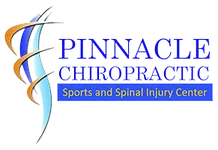By GRETCHEN REYNOLDS
This column appears in the July 21 issue of The New York Times Magazine.
If you have never suffered from lingering low back pain, you’re lucky or, more likely, young. Up to 80 percent of us will experience low back pain at some point. And for most, there won’t be an identifiable cause.
In the past 10 years, the most popular nonsurgical medical treatment for “chronic, nonspecific” low back pain has been injection therapy, or shots into the lower back of various substances — usually cortisone but also liquid ibuprofen, morphine and vitamin B12. Doctors have been turning to injection therapy at a “disproportionately escalating rate,” according to an overview of back-pain treatments by a team led by Dr. Janna Friedly, a back specialist and an assistant professor of rehabilitation medicine at the University of Washington in Seattle, because it’s relatively easy to administer, less invasive than surgery, can provide some pain relief for a few weeks for some people and is profitable for physicians.
But the benefits do not last, the latest science shows. In a commentary published in May in The Journal of the American Medical Association (JAMA), researchers from the Netherlands point out that there is almost no evidence that the shots ease most people’s pain long term, even after multiple injections. Other recent studies have concluded that injections also do not significantly reduce the likelihood of back surgery later. And in a particularly sobering study published in February, researchers found, to their surprise, that a small group of subjects with pinched nerves in their backs showed less improvement after injection therapy than a control group during a four-year follow-up period. Based on the available data, the JAMA authors conclude, doctors “should not” recommend injection therapy to their patients with chronic low back pain.
The lack of other options that can be administered in a doctor’s office, however, is frustrating to physicians and their patients, says Dr. Friedly. Doctors “want to be able to do something,” she says. But it may be that in their desire to treat back pain, doctors are compounding the problem and creating a disease state where none may exist. “I think we’ve begun pathologizing pain,” she says.
Since most adults develop an aching back at some point, Dr. Friedly says, it shouldn’t always be viewed as an abnormal condition that requires costly medical care. Having some back pain can be a normal aspect of aging that should be met with acknowledgment, patience and, even more important, a change in lifestyle, particularly exercising more.
According to a study published in March, a simple walking program can help adults strengthen their aching backs as much as a more complicated series of back exercises. A comprehensive review published in May in The Clinical Journal of Pain finds that there is “strong evidence for short-term effectiveness” of yoga against back pain, although whether the benefits last beyond a year is less certain. Other experiments have found that Pilates, stretching classes, acupuncture and stationary bicycling each provide some people with some pain relief, although in head-to-head studies, no one of those options is superior to the others.
And perhaps all of them work, to some degree, simply by distracting people. In a 2012 Japanese study, when adults suffering from chronic back pain visited an amusement park, their self-reports of pain dropped significantly, only to climb again as soon as the trip ended.
